Guelph, ON self-funded community – Junction Village
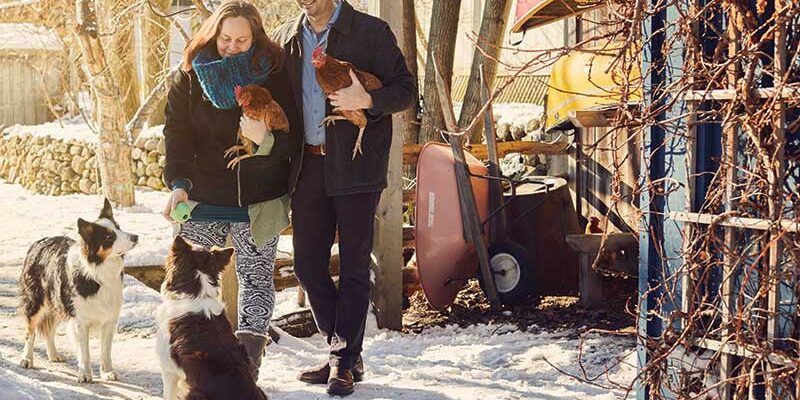
Designed, built, and financed by family and friends, The Junction Village is what everyone is looking for in a community. A grassroots multi-generational cohousing concept that includes several AirBNB properties as well as long-term rentals and a community “backyard”, this village in the center of Guelph, ON is looking to grow and add a few tiny homes into the mix.

Photo: Junction Village
We spoke to the fascinating couple, Mary-Kate and Mike, at the center of this community that brings people together from all over Guelph and even outside to connect and share.
Mike defines it as, “we use existing structures within a neighborhood to build an intentional community. It aligns with the densification that’s being required now of cities like they actually have to densify, and so it’s going to have to happen.”
The community is not “official” by any means, but well-known to the locals.
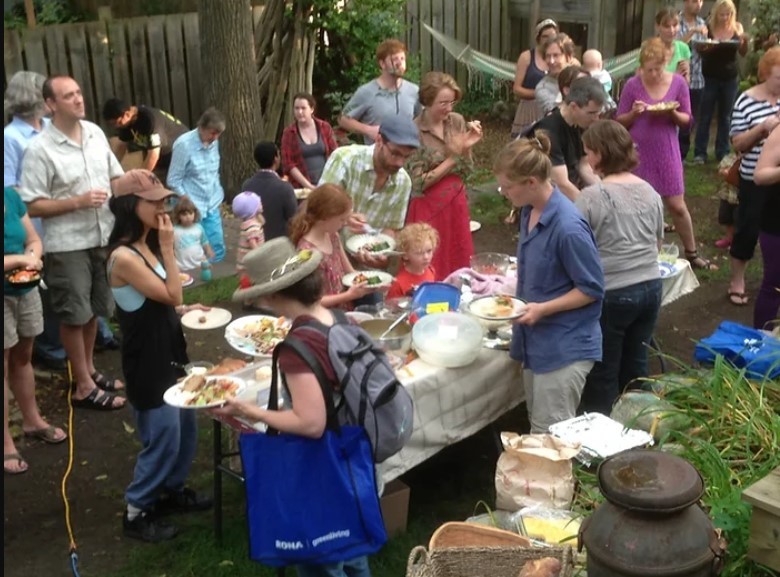
“We’re here and we have some neighbors who love us and have moved here to be part of us and we have some neighbors who have the city on speed dial.”
It all began with a single idea.
Mary-Kate says, “We lived in a shared house, so we lived with people. And then we started having babies. And we were like, ‘does this mean that we don’t live with people now, or does this transition into something else?’ And when our first daughter was born, I was breastfeeding and looking out the window at this rundown 1960s apartment building across the road from us. And I was like, ‘wouldn’t that be so fun if that was just all our friends?’”
 Soon after, the couple was driving home from visiting an intentional community that inspired them, when Mary-Kate said, “We need to buy that building.”
Soon after, the couple was driving home from visiting an intentional community that inspired them, when Mary-Kate said, “We need to buy that building.”
“And then we parked and the people who own the building happened to be there. So I just told them, we’d like to buy it and they’re willing to sell it. And I just thought I was going to talk about it for the future, but they came back, like, that night and said yes. So we very rapidly went from people who owned a house each – we lived in one house and were renting out the other – to people trying to work out how to buy this rundown 1960s apartment building and how we would renovate it.”

Photo: Junction Village
“Then we ended up putting a new roof on it and it was a great roof that could take solar panels, so we did a community funding approach and put solar panels on it. And then we have this big huge backyard.”
Mary Kate was the Outreach Coordinator for Transition Guelph at the time. “We wanted a place to gather for working group meetings, and we also had friends who had a CSA and wanted to drop it off somewhere. So they would drop it in the driveway and then we would run these meetings every week. That turned into us closing the road and we running these potlucks every week all summer. We did that for about eight years.”
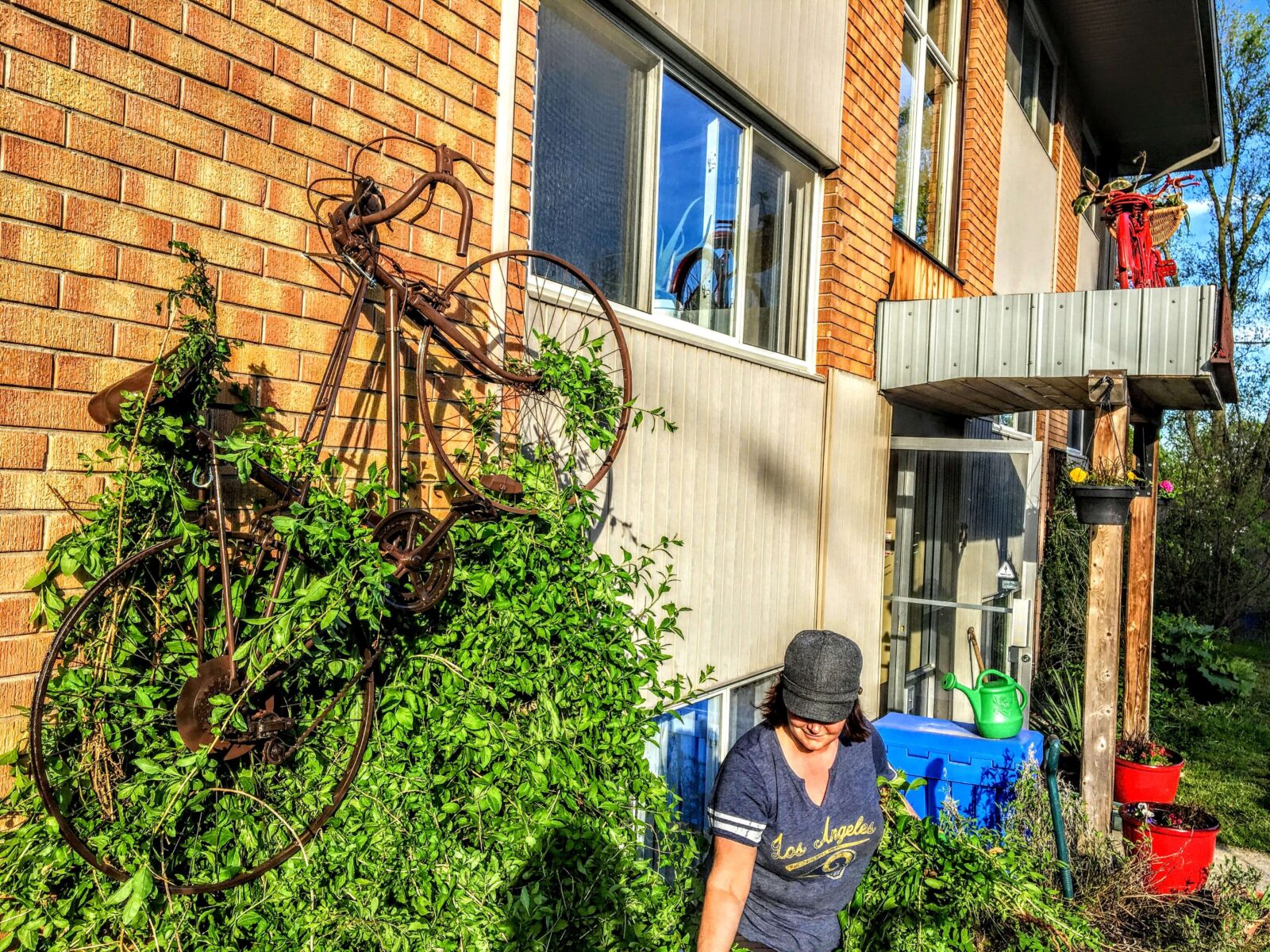
Photo: Junction Village
The community evolved gradually and naturally into whatever its residents needed.
“Sometimes it’s got a meal share. Sometimes it’s a potluck, sometimes it’s a nanny share. It’s been lots of different things in lots of different ways for layers of people who’ve lived here, lived in the apartment building, and bought houses close by. It’s very much gradually become something.”
The infrastructure of the community has also expanded gradually, based on opportunities that came up. Most of the buildings and common spaces in the community were built and designed by Mike and Mary-Kate with help from family and friends.
Megan, Mary-Kate’s sister, is considering joining the community as well. No stranger to tiny homes, she built a tiny home with her partner, sold it, and is now working in the field of tiny home financing. Her next steps? “There are lots of possibilities. I have a chunk of money from when I sold the tiny house and I’m trying to figure out what to do with it. One of the ideas is building a garden suite in [Mary-Kate and Mike’s] backyard. And then there’s another idea of going into a fourplex, with three other people and basically treating that as a shared space setting, a cohousing space.”
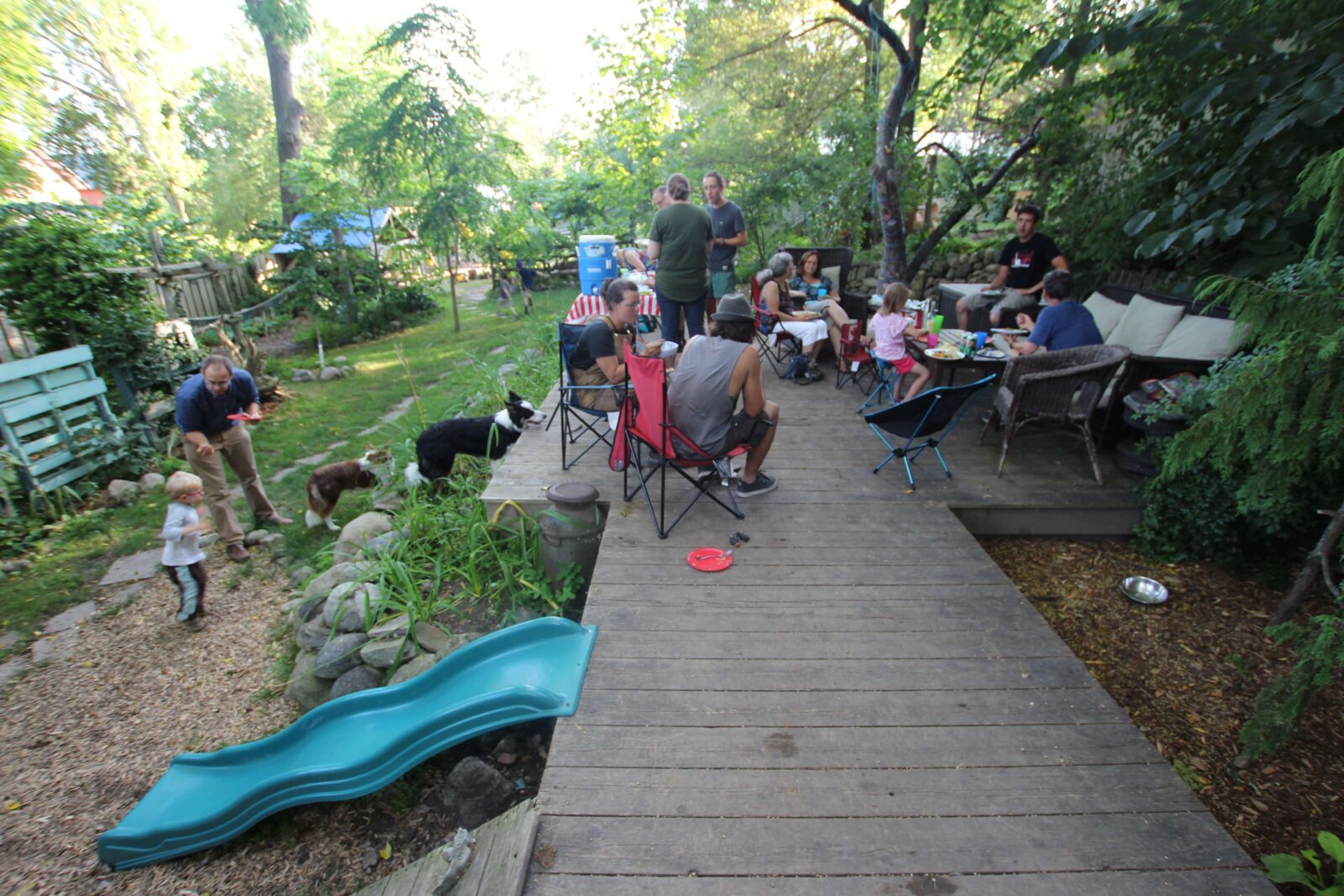
Photo: Junction Village
Mike says, “I really see this as a housing ecosystem. There’s different ways to access and different budget levels depending on what people want. The alcoves are quite affordable. And then there are private rooms, there are private apartments, there’s a studio cottage, and then the bunkie tiny house, depending on what people need. And a lot of people are looking for long-term housing, so they can stay here for a month and look and then also use the connections from the community to find what they need.”

Photo: Junction Village
“We’ve got this pod-like hostel, where we have these alcoves, or rooms, for short-term rental. But it’s becoming a real thriving community. Because you’ve this threshold of people who keep coming back because they love it here. They have games nights, they’ve got this meal share they’re doing.”

Photo: Junction Village
It would be unfair, however, to consider The Junction Village as something that sprung up on its own. If it were easy to create thriving co-housing communities, they would be everywhere. Mary-Kate and Mike are incredibly humble people, but what they’ve built takes a massive amount of drive, a keen understanding of people, and a sense of when to let go and when to reel things in. You also need to be a savvy property investor and good with money.
When Mary-Kate tells her story, her property-buying strategy seems to come down to two things: “Nothing’s ever for sale until you ask” and “We have to make this work.”
When Mary-Kate tells her story, her property-buying strategy seems to come down to two things: “Nothing’s ever for sale until you ask” and “We have to make this work.” However, you can see that she has a sharp eye for which properties should be considered and courted, and the couple has built a network of unconventional financing options that helps with the “make this work” part.

Photo: Junction Village
“Probably about the same time as we bought the apartment building, we mentioned to our neighbors next door that if they ever wanted to sell, we would buy their property. And they would make lots of jokes about it over the years about how they were going to put a For Sale sign in the front and see how long it would take us to come. Anyways, it took about 10 years and then they did just tell us they wanted to sell it. We weren’t really in a position to buy it, but we tried to get other people to buy it and nobody did.”

“So then, we were just like, ‘we just have to make it happen’.”
“So we put an offer in and then, in the time in between the offer and closing the sale, we just kind of catalyzed. We didn’t have 25 cents to pay for that house. We couldn’t get a mortgage at that point. So we were in an interesting space, but we still closed it and we managed to do it through innovative community financing.”
“In the past, we’ve asked people for personal loans. A sister of a close friend of ours calls us her community lemonade stand. And she says, ‘I never go by a lemonade stand without stopping and buying a cup.’ And so she’s lent us I think three or four separate loans for different projects. We bought a schoolhouse up in Beaver Valley, and again, we didn’t have any money to buy it so she was able to help us with two separate loans to renovate it to make it into an Airbnb and to install septic.”
“She then was involved in helping us with a huge loan, covered the downpayment for the house next door. So the whole house was a mortgage and her loan and there was enough there to build the alcoves. Basically, we just create private agreements at a certain interest rate. We even had a member of the community lend us money at a very good rate of 0% interest for the sauna.”
 “Basically, we have a whole series of community private loans with private agreements, and they’re all built on relationships. And it’s part of the challenge with all these projects is that they do have to generate income to be able to pay themselves back with interest.”
“Basically, we have a whole series of community private loans with private agreements, and they’re all built on relationships. And it’s part of the challenge with all these projects is that they do have to generate income to be able to pay themselves back with interest.”
What’s next for The Junction Village?
“About three years ago, we had a visioning session with members of the community. And we actually asked, ‘so we’ve got this space. We have some ideas, but what do you want it to look like?’. We came up with all these like pie in the sky ideas and some of the themes that kept coming up were wellness and housing and connection with nature, a community-shared kitchen – opportunities to collide and create connections. So we basically created a 25-year vision and we’ve actually had a landscape architect draw it out.”

Photo: Junction Village
“We’ve actually implemented quite a lot of it in two years. We built a community sauna, and we also put in an incineration toilet – it’s very convenient for people using the community skating rink or renting out the meeting tent in the summer.”
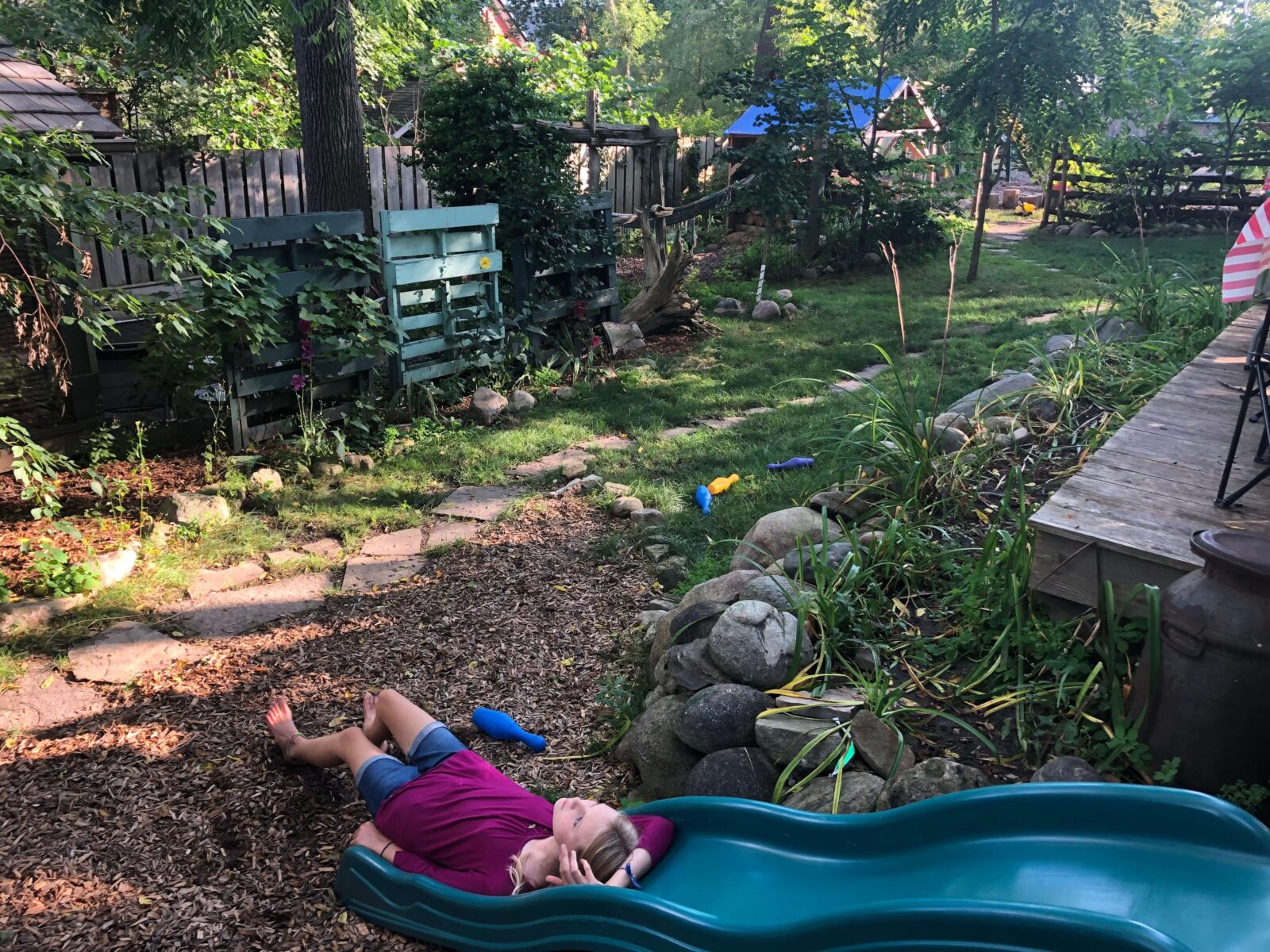
Photo: Junction Village
Recently, the village introduced a membership with a small fee to cover maintenance costs, but also to help people feel part of something. They have about 50 members already.
“For years, we would tell people to just come in and use it like a park but people didn’t really believe us. Getting their head around transforming a private space into a public access space was very difficult. But now that they’re members, we have people coming all the time and they bring their friends and they take them on tours because ‘I’m a member’. It’s actually such a subtle switch.”
Besides plans to buy more adjoining property and set up 1-3 tiny homes, there is the larger conversation of ownership to consider.
“We’ve been trying to figure out – we’ve been meeting for probably three years now – the possibility of creating a community land trust and transferring ownership. We’re open to transferring ownership to a much larger group of people. In fact, we would quite like to do that. Mike and I are holding four mortgages and trying to do this, but we want to make that jump from a privately owned landlord kind of model into a community action model.”
“Mary-Kate has been really looking into this idea of converting the land into a community land trust and then raising the money through community bonds to purchase the land.”
Mike says, “Mary-Kate has been really looking into this idea of converting the land into a community land trust and then raising the money through community bonds to purchase the land.”
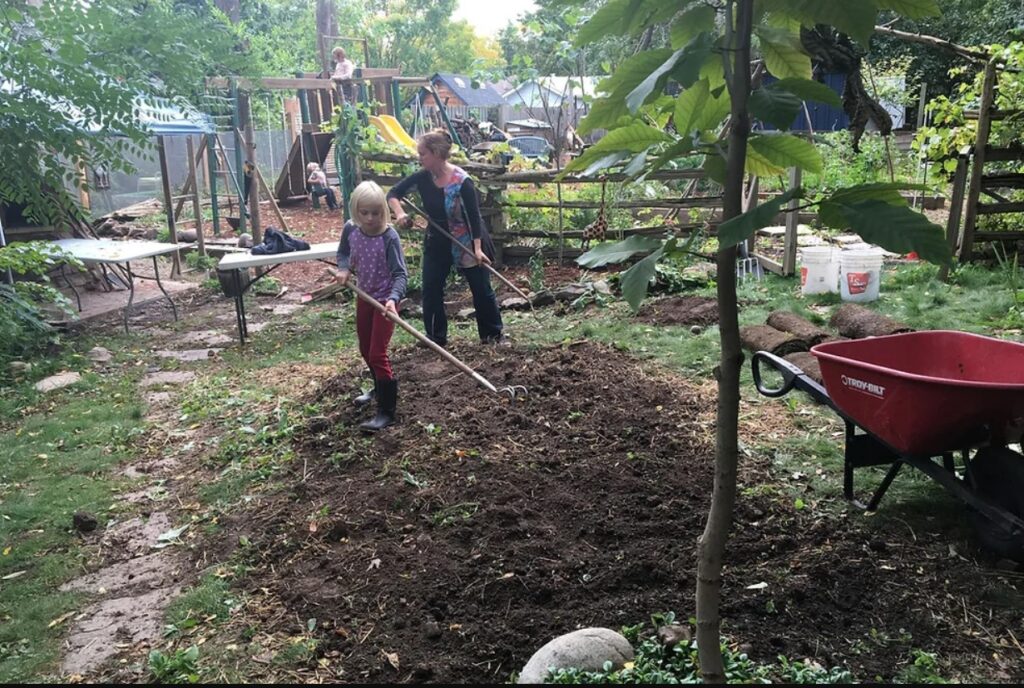 Mary-Kate explains, “Community Land Trust is used a lot in the states, so it’s not a new thing. It’s basically a community that owns a piece of land together, except the title of the land is held by this organization called the Community Land Trust.”
Mary-Kate explains, “Community Land Trust is used a lot in the states, so it’s not a new thing. It’s basically a community that owns a piece of land together, except the title of the land is held by this organization called the Community Land Trust.”
“So, in our situation, we would create basically a not-for-profit called The Junction Village Community Land Trust, and that organization would hold the title to the land. All of the decision-making about what happens on the land would be made by a board of directors. Usually, the board is made of ⅓ direct community members, 1/3 people who live in the surrounding neighbourhood, and ⅓ experts of different kinds who bring skills.”
“What’s interesting about it is the buildings on top of the land are disconnected from the title. So what you’re essentially doing is taking a piece of land and removing it from the speculative market. So it can never be sold on the speculative market again. But the buildings that are above the land, those could change hands.”
“It would mean you could put a tiny house onto community land and that tiny house, in the same way as a condo, pays fees to reside on the land. The resident of the tiny house could be part of the board of directors making decisions about all of the land. The person who owns the tiny house could sell their house to somebody else, but they could never change the title on the land.”
The couple isn’t worried about finding the right people to join the future Community Land Trust – it’s where the housing ecosystem comes into play. The Junction Village network stretches far beyond their block. “We have relationships now with other people in the city who have lived here, or who have apartments or have houses and want to be a part of the community.”

Photo: Junction Village
“When you would sell your tiny house, the next person to buy it would be sourced from the community of people already aligned with the vision. Maybe they’ve lived in an alcove for a month, then rented a two-bedroom apartment while they waited for one of these tiny houses to be available. There would be a list of people who would like to buy in, which means people can always fluidly buy-in and fluidly get out without being tied to the whole property needing to be sold.”
We have no doubt that The Junction Village will catalyze into something even more amazing in the future. “Catalyze”, a favorite word of Mary-Kate, seems to be how things happen over there.
Mary-Kate laughs, “I have an active imagination.”

Photo: Junction Village
Sponsored

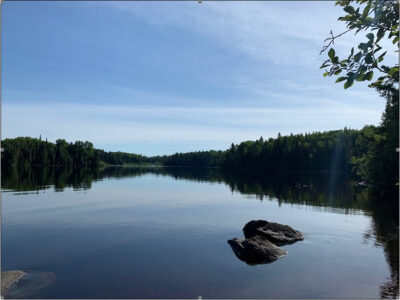
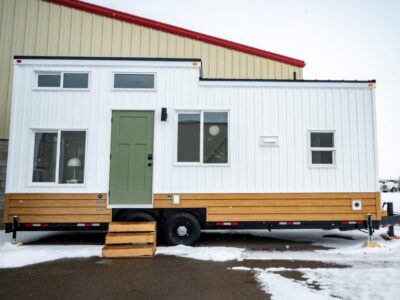

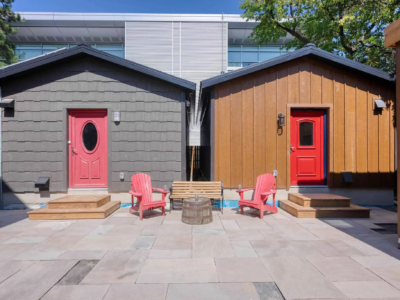

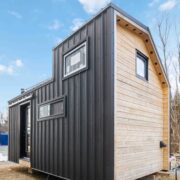
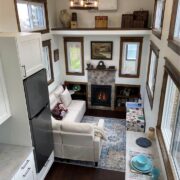
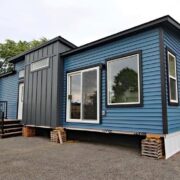
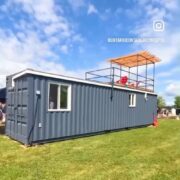

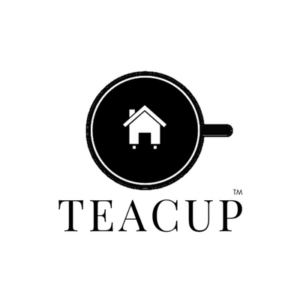
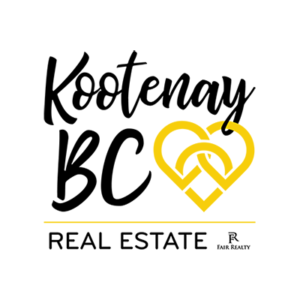
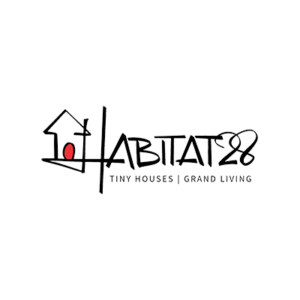
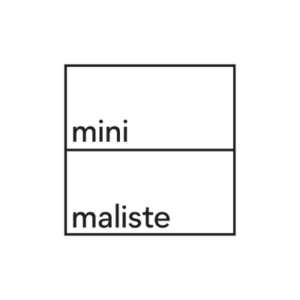
I believe this is a fantastic idea. I have been interested in tiny homes for about six years. I live in Newfoundland, and have been actively looking for a tiny home in Ont. I am familiar with the Guelph area, and would be interested to know if you have anything available.
Only last week I was in Ont. Looking at other areas, but nothing that was suitable. I am an independent female, yet, I don’t want to be isolate from a community. I love people and community minded vision is what I have always believed in. It is something I have seen growing up, but not what you see anymore which is unfortunate.